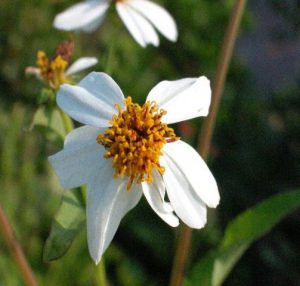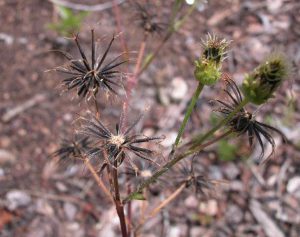Last Updated on June 24, 2020 by Yuvraj
Welcome to Weed Science Wednesday, a weekly series aimed at helping homeowners and horticulture professionals better identify and manage common landscape weeds in Florida.

Credit: Annette Chandler, UF/IFAS
The weed of this week is Spanish Needles (Bidens spp.). In Florida, there are Eight species of Bidens present. They are all commonly referred to as Spanish needles or beggar-ticks. Bidens alba and Bidens Pilosa are two of the common Bidens spp. found in container nurseries and landscapes in Florida.
Both species are very similar in appearance and biology and are capable of interbreeding. Their differences are distinctive, however, B. pilosa flowers usually do not have petals while B. alba usually does. B. alba is also more widely distributed throughout Florida than B. pilosa.

Credit: Annette Chandler, UF/IFAS
Bidens alba is native to Florida while Bidens pilosa is considered native to Central and South America and was introduced into North America.
They are generally found growing and flowering throughout the year in Florida but grow most vigorously during warm weather and when rainfall is abundant.
Spanish needles are self-pollinating, but they still attract pollinators. One plant can produce between 3,000 and 6,000 highly viable seeds with no dormancy requirement. The thorns on the seed aid seed dispersal by attaching to animals, clothing, or machinery.
For more information on Spanish needles, including specific recommendations for chemical, physical and cultural weed controls, please consult: Biology and Management of Spanish Needles (Bidens sp.) in Ornamental Crop Production.
 2
2
